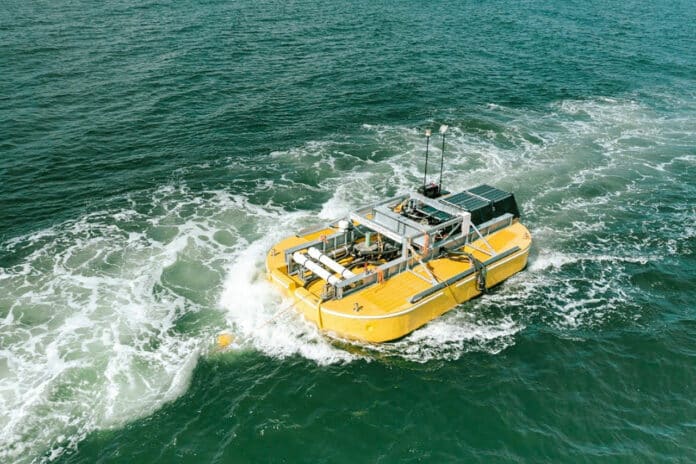A Canadian start-up called Oneka Technologies has developed an eco-friendly desalination system that turns seawater into freshwater without emitting greenhouse gas emissions, exclusively relying on the power of ocean waves.
Water scarcity has become one of our greatest challenges around the globe. Despite the abundance of water on Earth, only a small fraction of it is suitable for human consumption and agriculture.
This challenge will become more pressing as the world’s population continues to grow, their living standards increase and the effects of climate change intensify. Therefore, desalination technology is becoming more and more critical and ubiquitous.
However, the growth of the desalination industry has contributed to climate change by increasing fossil-based energy use. Large, shore-based desalination plants typically require vast amounts of energy to remove the salt, which may contribute to greenhouse gas emissions and increase the cost of water production.
Land-based industrial desalination plants take in enormous quantities of salt water and remove a waste stream of highly concentrated salt water or brine back into the ocean, where it can harm marine ecosystems and biodiversity.
To address these issues, Oneka has developed a remarkable desalination device that runs on mechanical power from waves as it floats in the ocean.
Oneka’s floating desalination buoys are anchored to the seabed using a membrane system that is solely powered by the movement of the waves.
The wave-powered buoys absorb energy from passing waves and convert it into mechanical pumping forces that draw in seawater. The forces push around a quarter of it through a reverse-osmosis desalination system to create fresh, drinkable water, which is then pumped using mechanical power to the shore.
The entire system is mechanically driven and works without any external electricity. The units require just an average wave height of more than 1 m (about 3 feet) to work. They are designed to withstand 6 m (20 ft) waves without intervention.
These remarkable desalination devices are built mainly from recycled plastic bottles; each “Iceberg” class buoy represents more than 170,000 bottles. The units come in three different sizes, with the largest one measuring 26 feet (8 m) X 16 feet (5 m). It can produce up to 50 m3 (49,000 liters or 13,000 US gallons) of drinking water per day – enough for the daily needs of up to 1,500 people, depending on lifestyle and consumption.
The briny discharge from the desalination process is mixed back in with the remaining three-quarters of seawater that the buoys pull in and release back into the sea. It’s only 30% saltier than the water around it – this is a negligible difference compared to the much more concentrated brine that land-based desalination plants release.
Additionally, the meshes of its strainer are 60 microns (smaller than the thickness of a human hair), which prevents the suction of fish eggs and any marine animals.
The company says their wave-powered desalination units emit zero greenhouse gas and save 1 ton of CO2e per year for each m3 of fresh water produced daily, compared to diesel-powered desalination plants. This means that in the pilot project, 50 tons of CO2e would be saved.
Of course, each unit requires regular maintenance, ranging from three to seven visits per year, for both preventative and general purposes. And with proper maintenance, each unit can serve for a duration of 15-20 years.
Oneka expects its desalination machines to be commercially available next year.
